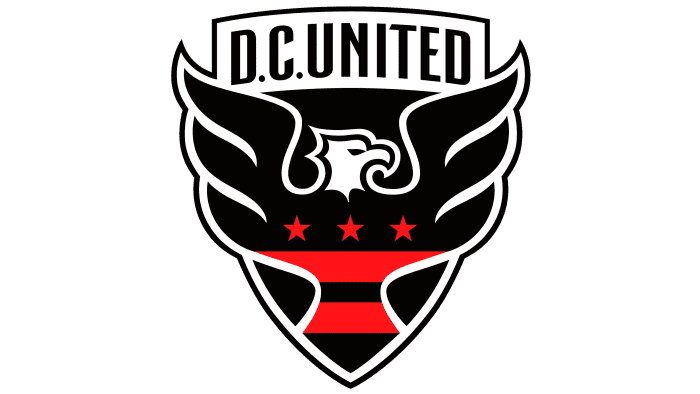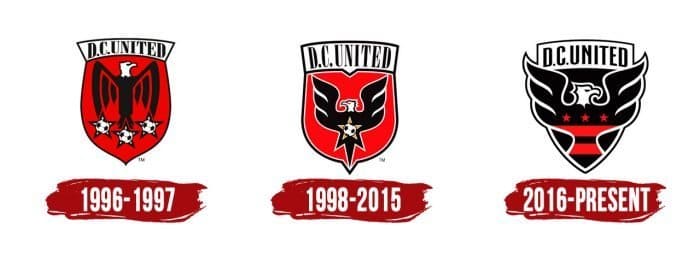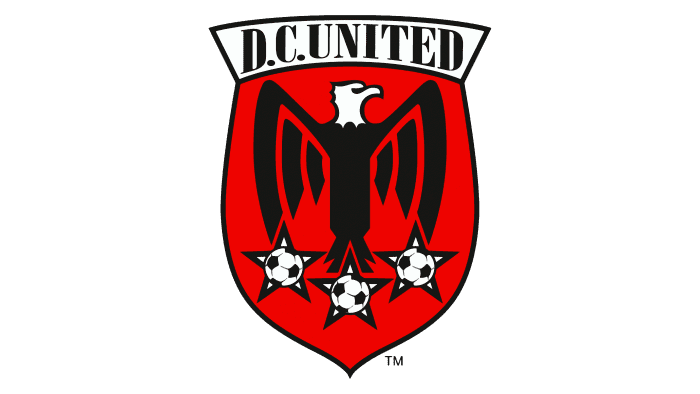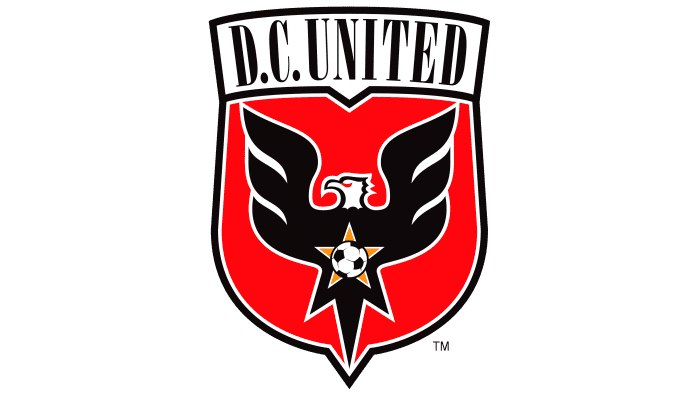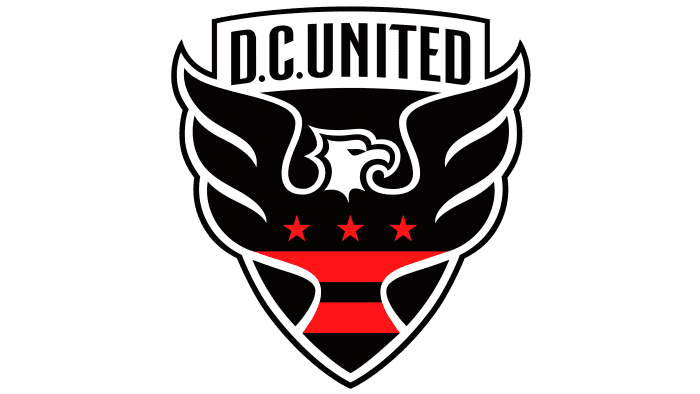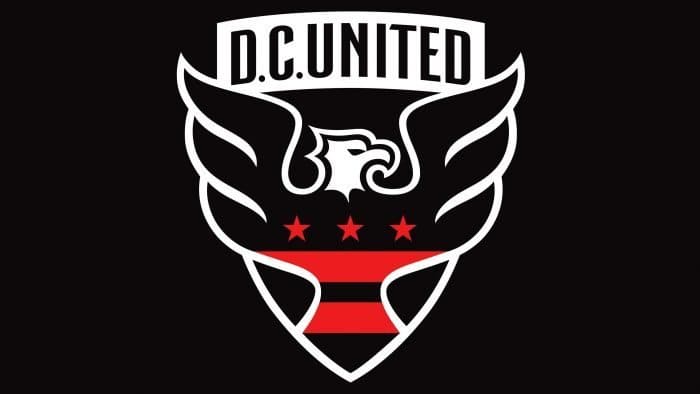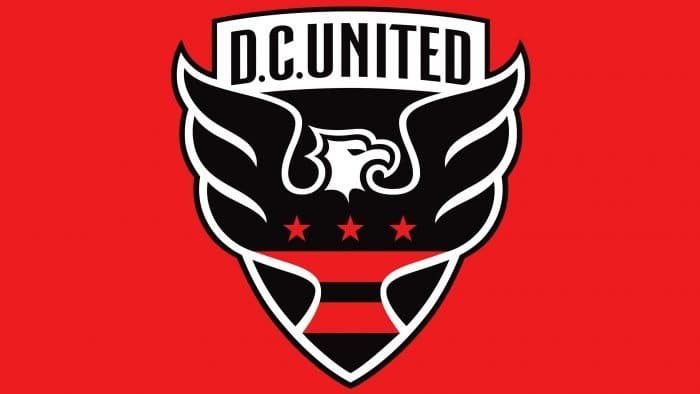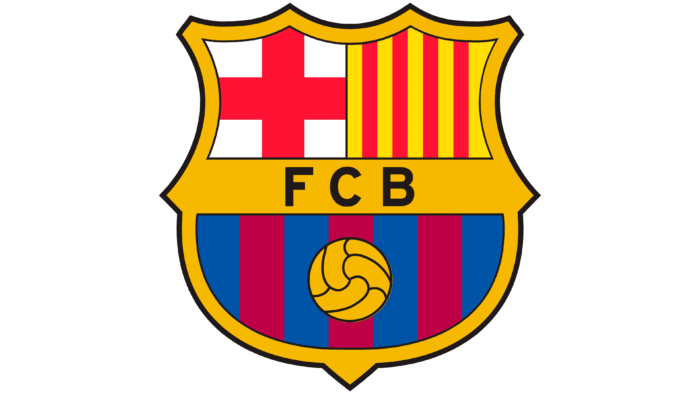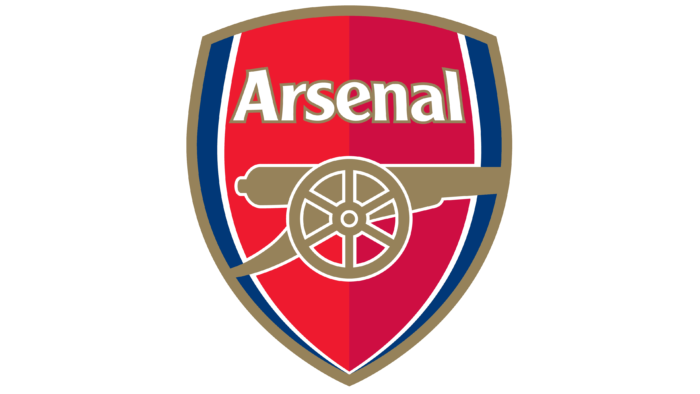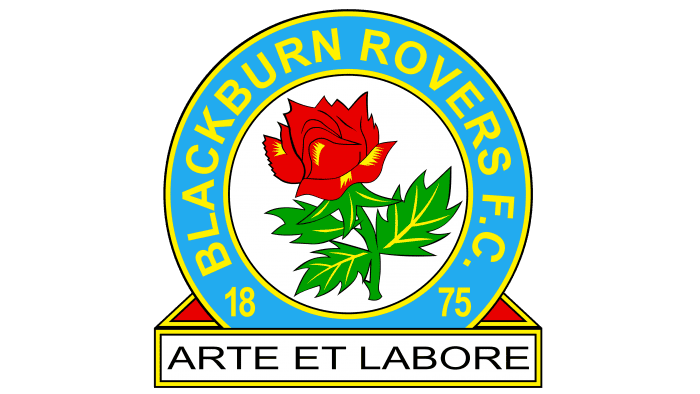The D.C. United logo expresses national pride. It symbolizes strength, courage, unity, and fury – qualities that lead players to victory. It embodies the spirit of competition, balanced with calm composure and a sense of superiority. This balance is the key to success.
D.C. United: Brand overview
| Founded: | June 15, 1994 |
| Founder: | D.C. United Holdings |
| Headquarters: | Washington, D.C., U.S. |
| Website: | dcunited.com |
D.C. United is an American professional soccer club competing in the Eastern Conference of Major League Soccer. The United States Soccer Federation contributed to its establishment, fulfilling its promise to FIFA by aiding in the creation of a new professional league. On June 15, 1994, Major League Soccer selected Washington from twenty-two contenders as one of the first seven teams, with three more added before the league’s launch.
The Washington Soccer LP group, led by billionaire George Soros, acquired the club’s rights in 1995. The company took responsibility for choosing a nickname. Ideas included “Spies,” “Americans,” and “Eagles.” However, the new team’s operators ultimately decided to simply name it “D.C. United.” The name “United” referenced well-known European clubs like “Leeds” and “Manchester United” and reflected the team’s location in the United States capital. “D.C.” is the traditional abbreviation for the District of Columbia.
The team’s colors and original logo were announced on October 17, 1995, alongside the colors and logos of the other ten teams at a presentation in New York. D.C. United’s primary colors are black and white, and the team’s nickname is “the black-and-red.”
On February 15, 2001, Washington Soccer LP sold the club to Anschutz Entertainment Group. On January 8, 2002, AEG, led by billionaire Philip Anschutz, became its sole investor on January 8, 2007, D.C. United Holdings purchased D.C. United from Anschutz Entertainment Group for $33 million. This group included Japanese-American businessman William H.C. Chang and developer Victor MacFarlane, D.C. United president Kevin Payne and former basketball players Christian Laettner and Brian Davis.
On May 21, 2009, previous owner Victor MacFarlane announced the sale of his share in D.C. United Holdings to principal owner William Chang, resulting in Chang obtaining 98% of the organization’s shares. On October 21, 2009, Chang bought out Davis and Laettner, who owned the remaining 2% and gained full control of 100% of the team’s shares. In 2012, Erik Thohir and Jason Levien, co-owners of the NBA’s Philadelphia 76ers, acquired the club and its holding company, with Chang remaining a minority investor.
Meaning and History
Since 1996, D.C. United has had three logos. They shared a concept (depiction of a bird with spread wings), color palette (combination of black, red, and white), and style (military-themed design). The club was often accused of its logos resembling the Nazi eagle. As a result, the club had to change its debut emblem just a year after its approval.
What is D.C. United?
D.C. United is an American soccer team from Washington. It competes in Major League Soccer’s Eastern Conference. The team is the only sports club to have won the Copa Interamericana. Boasting numerous trophies, it is one of the country’s most successful soccer teams. The team was founded in 1994 and began playing in 1996, gradually winning four MLS Cups, four Supporters’ Shields, six conference championships, and three U.S. Open Cups.
1996 – 1997
The first logo of D.C. United featured a Norman shield. The heraldic element has a triangular shape with smoothly curved sides. The red surface has a black outline. At the top is a framed nickname of the team. Dark letters stand out against the white background. The words are written in uppercase without spaces: dots are the only thing separating “D.C.United.” The font is old-fashioned, looking elegant due to the tildes and the contrast between thin and thick lines.
The bald eagle, the national bird of the U.S., occupies most of the shield, representing strength and speed. The eagle faces right; its wings are widely spread. Six schematic feathers (three on each side) point downwards. Below them are three white stars with a black outline. In the center of each pentagonal figure is a soccer ball. They represent the three jurisdictions of the region.
1998 – 2015
The debut logo of DC United lasted only one season. In 1998, the team changed it under public pressure. They kept the bald eagle, previously compared to the Nazi eagle, and modified some details. The heraldic shield became less rounded and more angular. The letters lengthened. Designers added a small space between “D.C.” and “United.”
The logo’s color palette remained the same, but the designers ran a white line between the red surface and the black outline. This line also outlines the eagle. The eagle’s head is disproportionally small and turned left. The wings are spread, like in the previous logo; only the feathers point sideways. Three sharp triangles in the tail and red eyes indicate aggression.
In the center of the bird is a yellow pentagonal star with a white outline, and inside the star is a soccer ball. This ball is a reminder of the club’s triumph in the inaugural season of Major League Soccer in 1996.
2016 – today
In 2013, United conducted extensive market research on the current state of the brand. The study showed a need for modernization to reflect the growth of the sport and the league in the United States. The current brand inadequately represents the United community. The DC United emblem acquired a new look, but the previous concept remained: it continued as a tradition of D.C. United.
After initial design work on the logo by Element Advertising, Red Peak Group enlisted designer Peter Horridge to create the final version of the logo. Horridge is based in the UK and was involved in redesigning the royal crest for the English Queen’s royal household.
On December 10, 2015, D.C. United unveiled the updated logo at Union Market. It features a triangular old French shield with a sharp point. The nickname is in a black frame above the heraldic symbol. The font is sans-serif, without flourishes. All letters are uppercase.
The eagle is at the center of the DC United logo. Its wings break out of the shield, emphasizing the brand’s core value – freedom. The shape of the eagle’s head hasn’t changed, but now it’s turned right. Below the bird are two wide stripes, and above them are three pentagonal stars in a line. These elements are taken from the flag of the District of Columbia and the coat of arms of George Washington’s family, dating back to 1559.
The color palette hasn’t changed since 1996, but the shades have become darker and deeper. The outline, wordmark, shield, and body of the eagle are black, while the background behind “D.C. United” and the inner outline are white. The stripes and stars are red.
D.C. United: Interesting Facts
D.C. United is a really important soccer team in Major League Soccer (MLS) with a lot of cool history.
- Starting: They were one of the first teams when MLS started in 1996, helping to establish soccer as a major sport in the U.S.
- First Winners: They won the first MLS Cup in 1996 by beating the LA Galaxy. It was a big deal and showed they were a team to watch.
- Lots of Wins: They’ve won the MLS Cup four times (1996, 1997, 1999, and 2004), making them one of the best teams.
- Winning Internationally: In 1998, they were the first American team to win the big CONCACAF Champions’ Cup, showing their strength in the U.S. and against teams from other places.
- New Stadium: They moved to Audi Field in 2018, a modern stadium just for soccer, giving fans a great place to watch games.
- Famous Players: Big soccer stars like Marco Etcheverry, Jaime Moreno, and even Wayne Rooney have played for D.C. United, making the team special.
- Team Colors: They’re known as “The Black-and-Red” because of their team colors, and you’ll see lots of fans wearing these colors at games.
- Fans Who Love Them: They have groups of super passionate fans like the Screaming Eagles and Barra Brava, who make game days exciting and loud.
- Big Rivalries: They have a big rivalry with the New York Red Bulls, making those games intense and fun to watch.
- Growing New Talent: They’re good at training young players in their academy, and some of these players have become professionals and done well in soccer in the U.S. and other countries.
D.C. United has played a big part in making soccer popular in the United States, with many wins, great players, and fans caring about their team.
Font and Colors
The enduring symbol of D.C. United is an eagle with outstretched wings, proudly looking to the side. The design of the logo has changed several times due to ambiguous criticism. Many accused D.C. United of resembling the Nazi emblem. However, the soccer club never deviated from its chosen concept, steadfastly sticking to its original style since 1996.
Artists managed to make the bald eagle look menacing and intimidating. Perhaps the national symbol of the U.S. seems so because the emblem’s primary colors are red and black. The sense of danger is intensified by a silhouette consisting of many angular elements. Even the three five-pointed stars against the bird’s backdrop seem ominous. However, they, like the two horizontal stripes, were taken from the Washington flag.
The font on the old logos resembles Copperplate Gothic Bold or Onyx. In the modern version, the words “D.C. UNITED” are written in the club’s proprietary font. The inscription has always been black because this color stands out well against the white rectangle. The shield and eagle are also black, except for the white bird’s head and the red pattern consisting of lines and stars.
D.C. United color codes
| Rosso Corsa | Hex color: | #da0000 |
|---|---|---|
| RGB: | 218 0 0 | |
| CMYK: | 0 100 100 161 | |
| Pantone: | PMS Bright Red C |
| Black | Hex color: | #000000 |
|---|---|---|
| RGB: | 0 0 0 | |
| CMYK: | 0 0 0 100 | |
| Pantone: | PMS Process Black C |
